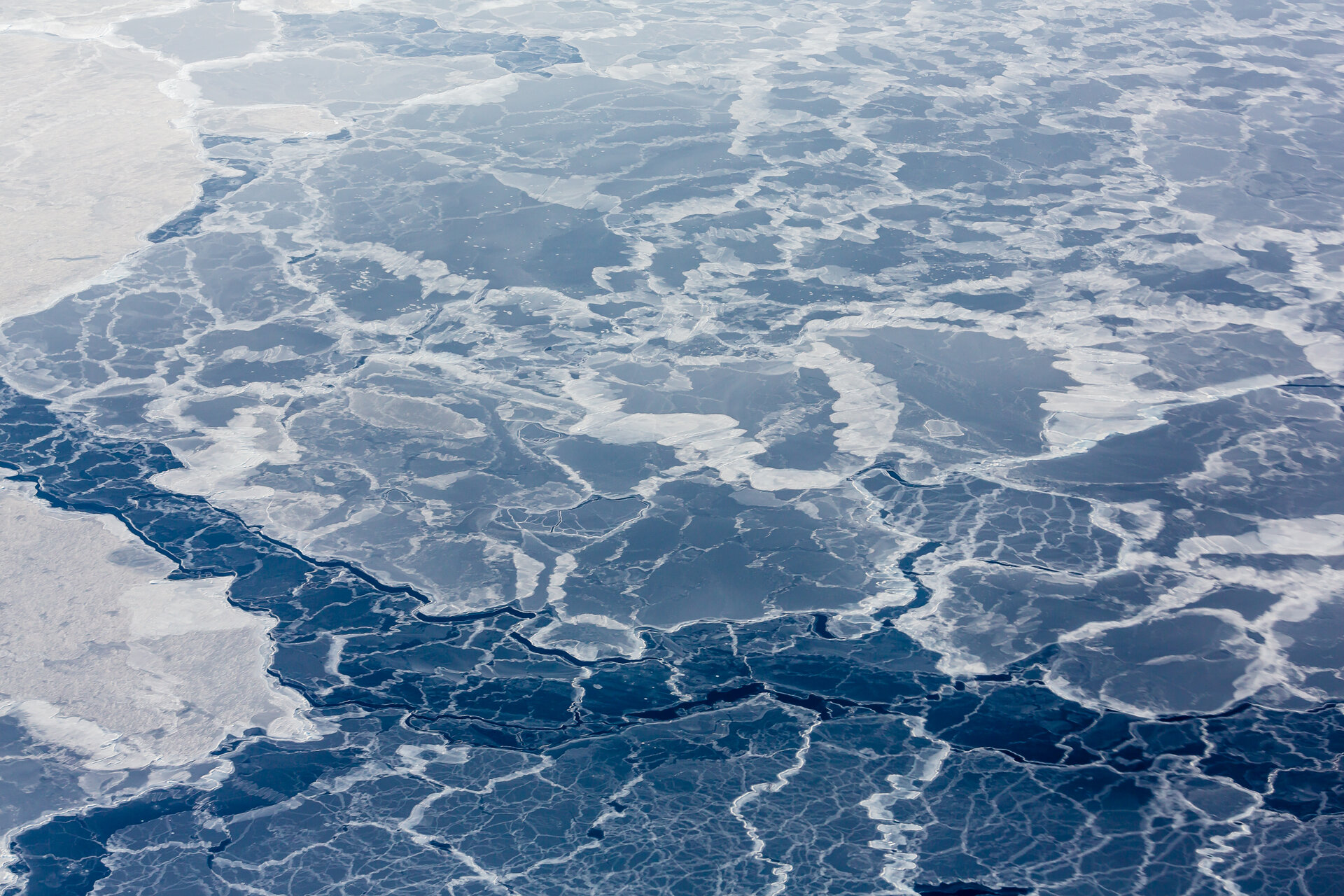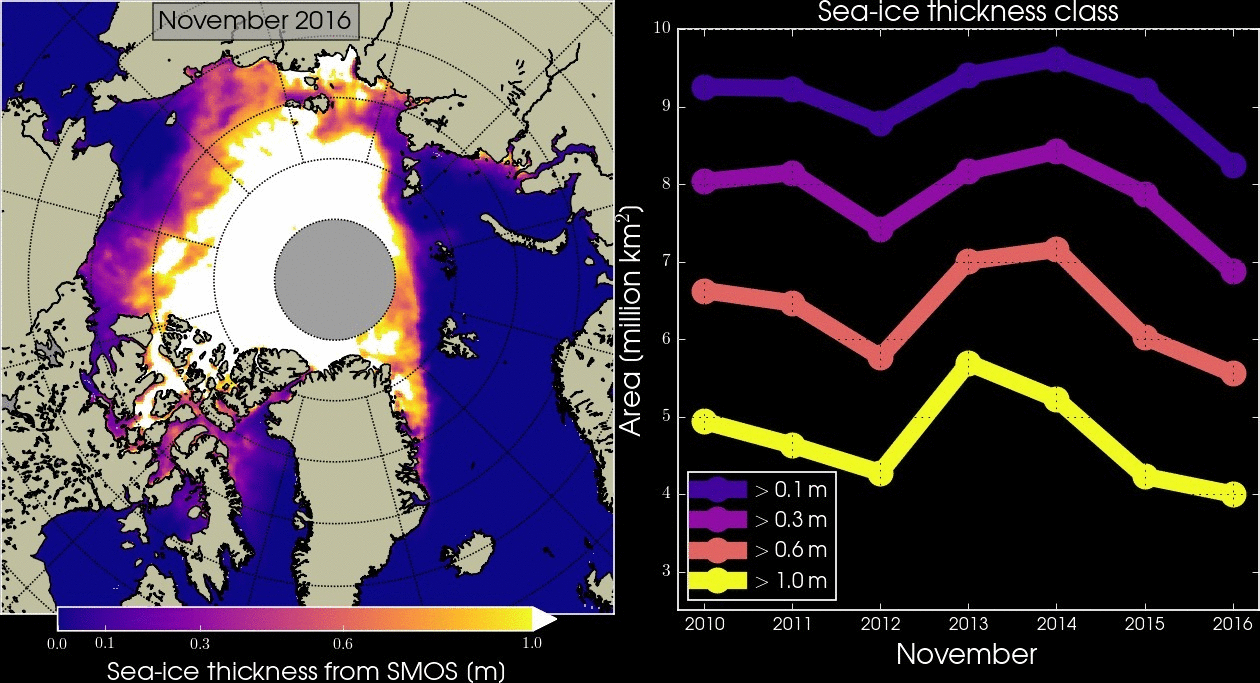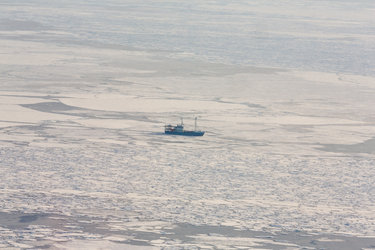

Thin sea ice
Adding another string to its bow, SMOS can provide information to measure thin ice floating in the polar seas accurately enough for forecasting and ship routing. Sea ice that is less than 50 cm thick is particularly important for weather and climate as it controls the exchange of heat and water between the ocean and atmosphere. SMOS uses an innovative technique of capturing images of brightness temperature, which correspond to radiation emitted from Earth’s surface to produce maps of soil moisture and ocean salinity. While it wasn’t designed to measure ice, radiation emitted by the ice allows SMOS to ‘see’ through the surface, yielding ice-thickness measurements down to 50 cm – mainly the thinner younger ice at the edge of the Arctic Ocean.





